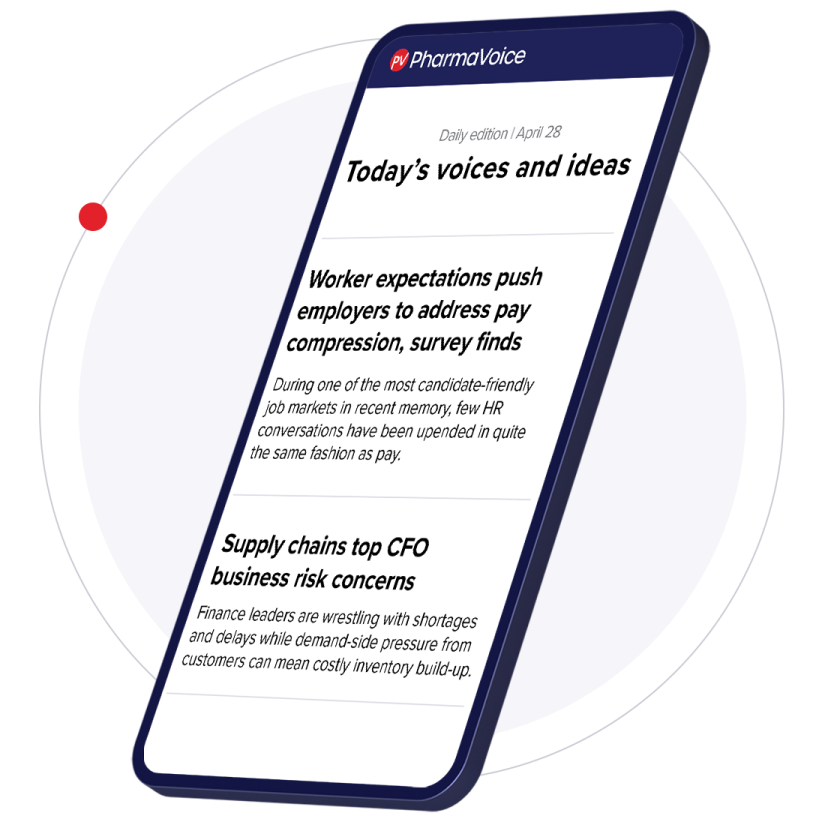Eli Lilly’s progress in Alzheimer’s disease is marked most prominently by last year’s FDA approval of the amyloid-plaque targeting therapy Kisunla.

But alongside the painstaking development of drugs for the complex disease, the company is on a mission to make more sensitive and meaningful diagnostics to help identify patients and more effective therapies.
Dr. Anthony “Nino” Sireci, senior vice president of clinical biomarkers, laboratories and diagnostics development at Eli Lilly, came to the Alzheimer’s arena from his work in cancer at Loxo Oncology, which the pharma giant acquired in 2019. Where Sireci has seen strides in precision medicine for cancer, he now sees the beginnings of a similar but faster movement in the devastating memory-stealing disease.
With lung cancer, for instance, only about 80% of patients with the disease are fully genotyped, Sireci said, despite having the ability to test patients for genetic predisposition for 20 years. In Alzheimer’s, he sees the same transition happening, but more quickly as drugmakers, healthcare systems and patients become more adept at navigating newer diagnostics technologies.
“How do we break that ceiling in Alzheimer’s disease? How do we make sure every patient is tested? Because that’s the only way to realize the full potential of the progress we’re making,” Sireci said. “We don’t want to settle for what we did in oncology, because we can do better.”
Lilly has used several diagnostic tools in its development of Kisunla. From PET scan imaging agents to ultra-sensitive blood tests, Lilly has worked with partners as well as within its LillyDirect platform to foster earlier diagnosis and wider access to these diagnostics.
"The next horizon for us has to be in identifying patients with amyloid pathology as early as possible, even before symptoms develop."

Dr. Anthony "Nino" Sireci
SVP, clinical biomarkers, laboratories and diagnostics, Eli Lilly
We spoke with Sireci about advances in Alzheimer’s disease detection, how it weaves into the drug development process at Lilly and in the wider research community, and where he hopes to see diagnostics helping identify patients and the disease in the future.
This interview has been edited for brevity and style.
PHARMAVOICE: How has the Alzheimer’s disease landscape changed in the last decade or so?
DR. ANTHONY “NINO” SIRECI: There was a time when the idea of measuring something in the blood to help diagnose Alzheimer’s disease was a pipe dream, but slowly we developed assays that measured biomarkers like Aβ40 and Aβ42, which have now been on the market for several years. The real shift, in my opinion, came when we started looking at phosphorylated tau, which can be quite helpful to diagnose amyloid pathology in the blood. Two post-translationally modified fragments of tau — p-tau181 and p-tau217 — correlate with the presence of amyloid in the brain. That was a game changer, and with p-tau217 in particular we see performance characteristics of assays approaching 90% positive predictive value. If you’re positive, we’re 90% sure you have amyloid pathology, and if you’re negative, we’re 90% sure you don’t.
I’ve seen the evolution of biomarkers to be of incredible value, and we’re starting very early on to see what makes them valuable to clinicians.
The other place we’ve seen developments in the Alzheimer’s space, far faster than in oncology, is coding and [payer] coverage. Because you can have the best technology and the best medicine, but if patients can’t afford it or access it, then what good is it?
Why are these leaps in understanding of the disease happening right now?
First, there’s the technology. These fragments of proteins that we use as biomarkers require super sensitive tech not just in high-power academic labs but in clinical laboratories. There have been improvements in what we can measure in the blood.
And then there’s the understanding of these biomarkers. We didn’t know about p-tau217 until a few years ago, and it took a lot of very careful, painstaking work to understand what it is in the tau tangle and the amyloid plaque that we could measure in the blood.
We’re in a new age where we understand the pathology, we have the technology to diagnose and we also have potential therapeutic options — that triumvirate has made the diagnostic landscape explode in Alzheimer’s disease.
How does biomarker research fit into the drug development arena at a company like Eli Lilly with a foot in both worlds?
Biomarkers serve multiple roles in drug development and eventually in commercialization and access. In development, you can think about them first as a marker for patient identification and enrollment in clinical trials. In [Kisunla’s] Trailblazer-Alz 2 [phase 3 clinical trial] we used PET to identify patients, which is a visual biomarker. In the Trailblazer-Alz 3 [phase 3 trial in preclinical patients], we used a blood biomarker to define the population. So we can use a biomarker for engagement or efficacy to ask whether your medicine is working, as opposed to an ultimate outcome, which might be symptom progression.
We have not talked a lot about biomarkers in Alzheimer’s disease resistance, but in cancer we do a lot. In cancer, we talk about biomarkers as potential surrogate endpoints for trial design, as a marker for progress and patient response to a drug. We’re not talking about that yet in Alzheimer’s, but I can imagine a world where we start to think about certain biomarkers as an endpoint. The FDA has very high bars for that type of engagement, but it’s not crazy to think in that direction.
Where is Lilly now in the Alzheimer’s diagnostic space, and what’s next?
We have our first FDA-approved assay in Lumipulse p-tau217/Aβ42 for the early symptomatic patient population. That’s huge. We have a number of [in vitro diagnostic] manufacturers who are moving toward FDA submission as well, which we’re excited about. We also have a number of laboratory developed tests, and we have guidelines that tell us what those assays should look like, with 90% specificity and an indeterminate range of less than 20% in an asymptomatic or a symptomatic patient population. We know how to validate, and we know what to look for in terms of performance characteristics, and this all happened quickly.
The next horizon for us has to be in identifying patients with amyloid pathology as early as possible, even before symptoms develop. We know amyloid deposition in the brain will happen before neuronal death happens — so how do we identify those patients? Developing blood tests or using existing blood tests will be huge and will open the door for patients to have access to this testing before they have symptoms.
How well are health systems using these biomarkers to make them available for patients?
We’re in a good position from an availability perspective and from a regulatory perspective. Uptake, while it has been faster than in cancer, isn’t yet universal, for sure, and probably not yet offered to the majority of patients. Some of that is a lack of belief on the part of physicians or limitations in the guidelines for when you can use these tests. So we need to think about ways to prove or support the use of these tests in a broader patient population. They’re not being used as much as they should, and the secret to getting there is continued publication, continued iteration on those guidelines and patient education.
How does Lilly plan to make sure the diagnostic and therapeutic pathways are tied together in Alzheimer’s for more precise treatment down the road?
First and foremost, Lilly is working with partners to see additional validations and additional approvals in the Alzheimer’s space for biomarkers, and making sure we cover the globe with appropriate, high-quality testing. It’s a huge priority to get patients access to these tests and pave the way for earlier diagnosis. Maybe someday it becomes part of routine blood work on an annual basis for patients over 50 or over 65. That would be an exciting place for diagnostics to play a part, and it would have to be blood-based.


















